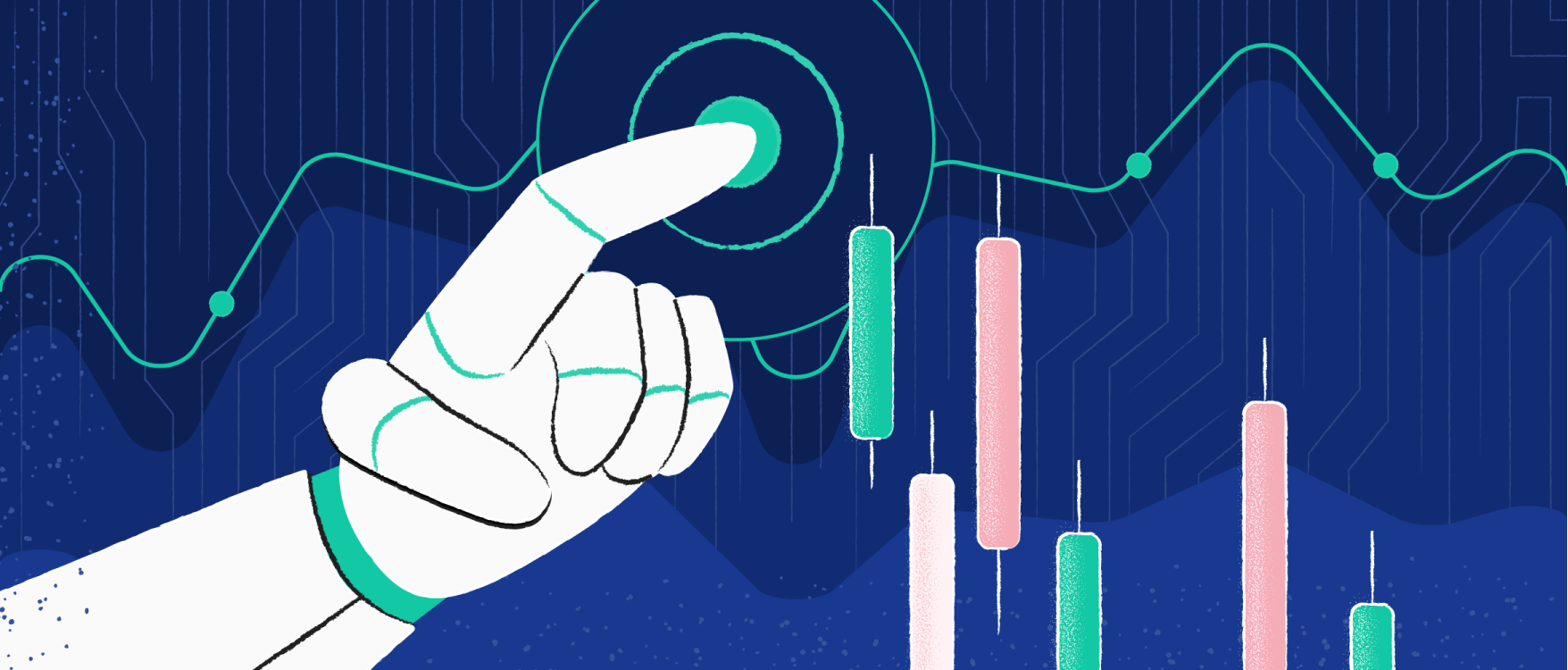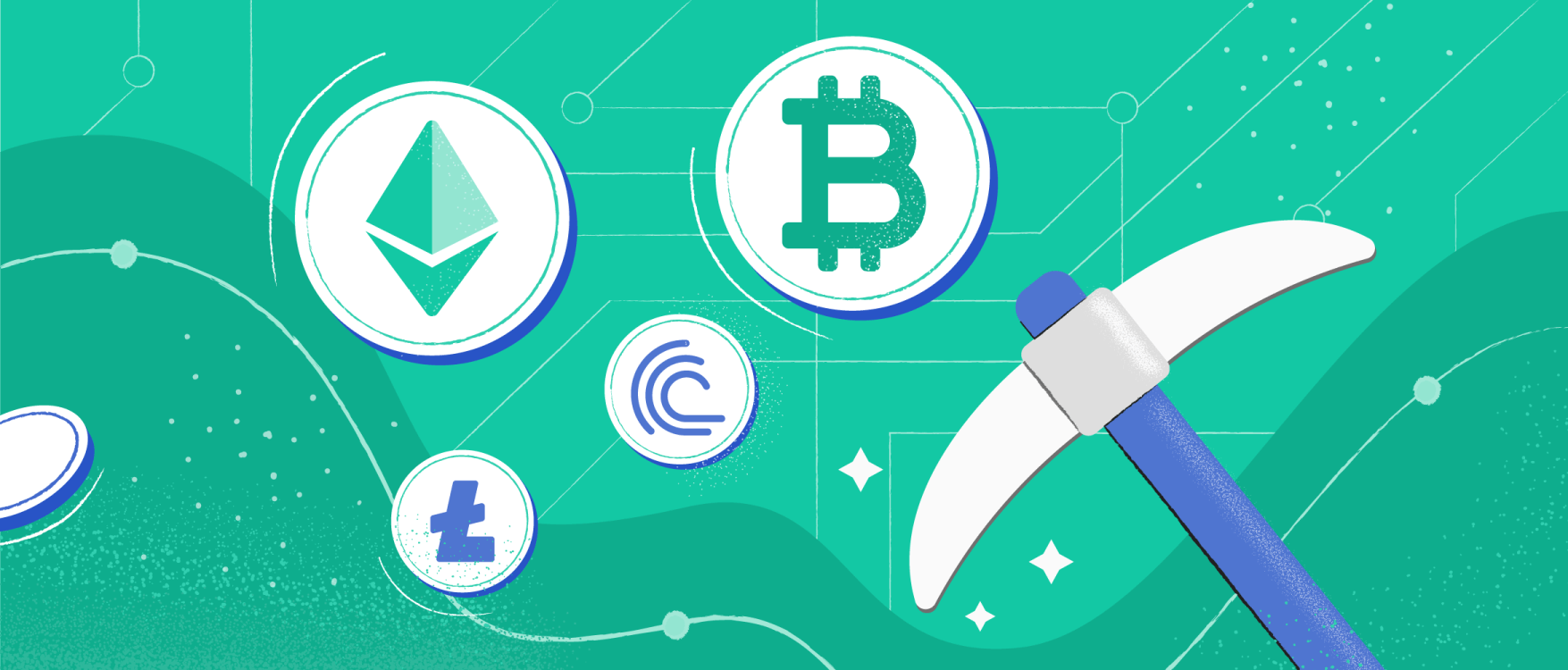
- All
- Tools
- Analytics
- Technical Analysis
- Trading
- Blockchain
- DeFi
- Guides
- Company News
- Educational
- Opinion
- Price Predictions
- Market News
- News
- Trading cases
- Practical guides
- Exchanges
- Trading signals
- Cryptocurrency
- Crypto bots
- Other
Become a crypto master
Learn everything about crypto,
trading and bots

How to Benefit From Crypto Market Movements With Algo Trading
This article describes how to start algo trading in a few key steps, as well as some of the key advantages and disadvantages of automated trading in crypto.
Start Trading on 3Commas Today
Get full access to all 3Commas trading tools with free trial period

What is algo trading?
Algo trading, or algorithmic trading, is the process of trading using algorithms. As opposed to manual, where computers serve as tools for active trading, algo trading allows traders to write a strategy in the form of a computer algorithm and delegate the execution of trading decisions to a machine.
Algorithms are sets of strict and explicit rules that are followed by computers. Unlike trading manually, algo trading minimizes human interference with the process and is widely praised for eliminating the “human factor” of trading almost completely.
How does algo trading work?
In 2023, the significance of algorithms in the trading world has reached new heights. At their core, algorithms remain sets of precise instructions tailored for computer program execution. These instructions embody a trader's strategic vision, outlining specific rules for asset entry, exit, and money management, along with conditions prompting particular actions. Advanced traders in this era often infuse their strategies with bespoke indicators, frequently collaborating with skilled programmers to devise versatile algorithms that stand out in a crowded market.
The realm of automated trading systems has seen substantial evolution by 2023. While some systems persist as niche software demanding a grasp of specific programming languages, a burgeoning segment of algo-trading platforms has democratized access. These cutting-edge tools utilize widespread programming languages or offer intuitive user interfaces, empowering traders to design strategies via pre-configured modules. Such innovations have been game-changers, especially for traders venturing into algorithmic trading without a deep technical foundation.
Algo trading in crypto markets
Algo trading may be exceptionally beneficial for crypto markets, and not without reason. Crypto is a market that is rapidly developing, and hence highly volatile, but also potentially lucrative if smart trading strategies are employed. Some features of crypto may make algo trading in crypto even more rewarding by elevating the pros of algo trading. Consider the following points:
Volatility
Cryptocurrencies are highly volatile, which means that asset prices change quickly and by large orders of magnitude. This puts a premium on the timeliness of trading decisions—which is precisely what algorithms are good at. In crypto, speed is more important than in more conventional assets, hence algo trading is potentially more profitable.
Diversification
A diversified crypto portfolio may be very complex to manage: it may include as many as 20 different cryptocurrencies. Algo trading can be the right solution for managing such a complex portfolio, because it is computationally far more powerful than a human mind.
Regulation
Cryptos are less regulated than other assets, which drives regulation and compliance costs down and allows for more experimentation with trading strategies. This means there are incentives to develop ever more ingenious trading algorithms, which creates new profit opportunities. At the same time, this does present new risks as well.
Solutions are already available
Many simple solutions are already available on the market, allowing for automated portfolio rebalancing, automated arbitrage, integration with crypto wallets and exchanges, and more. With all of these solutions, the entry costs for algo trading in crypto are diminishing while the opportunity for successful trading remains large. Check out Upbots, AlgoTrader, and a range of trading bots for different purposes available through 3Commas.
Of course, most of the advantages of algo trading in crypto can also be considered disadvantages. For example, less regulation means more risk, and more innovation means tougher competition.
Still, cryptocurrency algo trading presents a wide range of unique trading opportunities, so it’s understandable if you want to start trading immediately.
What are the steps to follow for algo trading?
Algo trading greatly reduces the possibility of human error in the execution of trades and elevates the significance of algorithm design: the trading strategy. Hence, before implementing automated trading, one ought to strategize and think about how to implement their trading strategy through an algorithm. There are several things to consider:
Formulating a strategy
Your strategy can be very simple and include rules based on mean reversion, spotting arbitrage opportunities, or based on more complex indicators and factors. Regardless of your strategy, you must hone in on one strategy at a time. This process usually involves the following steps: select or create an appropriate strategy, set up your programming environment, gather and structure the data you’ll need to backtest it, do the testing, adjust your strategy based on the testing outcome, and then deploy the strategy when ready.
Implementing the algorithm
Turning a strategy into a set of machine-readable instructions is a complex problem in and of itself. For example, implementing a simple moving average strategy would include choosing a crypto, analyzing its historical performance, checking if it has a positive trend, and computing the current average trend deviation on whose basis the decision will be taken.
There are multiple guides for doing this with different programming languages and platforms. One thing to note: particular attention must be paid to compliance as the algorithm must not violate the relevant regulations in your jurisdiction.
Setting up the infrastructure
The choice to make or buy software is entirely up to you, and depends on the opportunity cost of the decision. Even if you only need a piece of software and can licence everything else though a subscription plan, software and hardware costs are things to be considered before going down the algo trading route. Unless you have the resources and skills to build software in-house, you can buy a prebuilt solution from any number of providers, like Tradestation, Multicharts, Omnesys NEST, Presto ATS, etc.
Testing the algorithm
Having formulated and automated the strategy and set up the infrastructure, it's time to test your new strategy. Try using the algorithm and performing some actual trades, or use it to reproduce some historical trading pattern to see how well the strategy works.
Types of bots for algo trading in crypto
Following up on the point about the availability of solutions, you should also know what kinds of trading bots are available in crypto. The easiest way to make sense of their variety is to classify them into four main categories: trend-trading bots, arbitrage bots, coin-lending bots, and market-making bots.
- Trend-trading bots try to exploit an asset’s momentum. They analyze a given trend and place trades accordingly.
- Arbitrage bots identify inefficiencies and price differences across markets or assets and exploit those divergences for a profit.
- Coin-lending bots automate the process of lending cryptocurrencies at advantageous interest rates and help mitigate interest rate volatility.
- Market-making bots exploit the difference between selling and buying prices, otherwise known as the spread.
Trading bots communicate with crypto exchanges and place orders automatically in accordance with a strategy. They work in three steps:
- generate a signal
- allocate the risk
- execute the trade
Signal generators accomplish the trader’s task and make predictions, identifying possible trades by analyzing market data and technical indicators. Next, they allocate the risk in accordance with the strategy requirements that prescribe the methods of capital allocation during the trade. Finally, when the trades are executed, cryptocurrencies actually change hands by following the signals of the preconfigured trading system. Signals are converted into API requests that are sent to the cryptocurrency exchange which execute the transactions as requested.
What are the pros of algo trading?
Algo trading has some obvious advantages that are frequently invoked in professional discussion. Most of them follow from algo trading’s capacity to minimize human intervention in the trading process.
Minimizing emotions
Trading is stressful, and sometimes emotions can overwhelm even the most experienced traders. Algo trading takes the execution of trades out of human hands, and thus eliminates the risks associated with emotional trading.
Backtesting
Like physical models, trading algorithms can be tested before putting them into practice. This is known as backtesting: running an algorithm on some historical trading data to test the strategy that is programmed into it. Sometimes this may not be very useful if markets have changed significantly and historical data no longer captures the market dynamics adequately. However, if backtesting is possible it should always be utilized since testing a strategy without risking money is always great to have.
Discipline
Algorithms are perfectly disciplined. They follow rules exactly and do not make human errors, e.g., putting a decimal in the wrong place and incurring an exponentially greater loss. Algorithms eliminate the agency problem in the sense that there are no execution errors, only planning errors. With algo trading, if you’re sure about the plan, you don’t have to worry about the execution.
Speed
Algorithms are fast. A subset of algo trading is high frequency trading (HFT), which uses ultra-fast algorithms to perform millions of trades in fractions of a second. More generally, algorithms unlock new sources of efficiency that are related to the speed of execution: entering or getting out of a trade a few seconds earlier can make a difference in a fast-moving market.
Diversification
Interestingly, the automation of trading also makes new ways of diversification possible. Diversification is a way of spreading the risk across different instruments, but controlling and monitoring many assets is cognitively demanding. Not for algorithms. One of the advantages of algo trading is that it helps control a complex diversified portfolio.
Continuity
Algorithms can work 24/7 without interruptions. This is a great advantage for two simple reasons: first, sometimes it is important to stay focused and disciplined to continue trading until momentum starts to build up. When it comes to repetitive tasks, there’s no way humans can be more persistent than algorithms. Second, it frees up time that could be spent more productively by the trader, like analyzing the market for their next trading strategy.
One of the other more obvious pros of algo trading is its scalability. With algorithms, one can not only trade faster, but also with larger volumes and greater accuracy.
What are the cons of algo trading?
The disadvantages of algo trading stem from the same root as its advantages: changing the division of labor between human traders and computers. Here are some of the most common issues that may emerge.
Technology failure
Any technology can fail. Algo trading redistributes the burden of error from human to machine, eliminating the risk of execution and putting the weight completely on the design side. An algorithm can be wrong only because the rules are wrong, period. Sometimes, however, unexpected events can happen on the technical side: power loss, connection breakdown, software failure, etc. Algo trading relies on an extensive data-processing infrastructure and thus is more technology-intensive than other kinds of trading. This creates more exposure to purely technical risks and failures.
Active monitoring is needed
Automation is never complete, in trading or otherwise. Therefore, algo trading does require some active monitoring on behalf of the trader. This is necessary not only because of technical failures, but also in case of trading anomalies. Even in algo trading, where the algorithms simply execute trades following a set of predefined rules, their interaction may lead to unpredictable dynamics, akin to those that led to the Flash Crash in 2010.
Overfitting
Like other technologies of automation, algo trading may create an illusion of control, thereby diverting attention from some of the real risks. For example, there is a danger of over-optimization, whereby traders will train algorithms on historical data, becoming obsessed with curve-fitting and losing sight of the actual purpose of the procedure. As a result, algorithms will be able to take advantage of certain historical trading patterns, but fail in real trading because those patterns no longer exist.
Some of the other, more obvious cons of algo trading include the high cost of implementing fully fledged automated trading. Algo trading requires significant investment of time and money to learn programming , hiring people possessing the requisite skills, or purchasing the technical infrastructure, data processing and computing capabilities necessary to trade successfully.
Before you automate
Before you automate, make sure you have considered the following important points. First, there are lots of scams that pretend to be automated trading systems. To spot them early on, follow these simple steps: do as much research on the trading system in question as you can, look for reputable testimonials and reviews, learn how the system works, use the trial period (and be careful if such an option is not available), and do not pay any money for promises without seeing an actual product.
Second, think carefully if you really need algo trading. Perhaps it’s not worth it given the investment it requires to be implemented. Perhaps you can do better with old-school manual trading. Perhaps it is worth spending some time on training to algo trade and learning some simpler strategies before tinkering with more complex ones.
Third, always keep your financial goals clearly in sight. While algo trading can be appealing, it’s not a substitute for professional and carefully executed human trading. After all, algorithms are just tools. For some traders, going algo may be a way to scale up and unlock new sources of efficiency, while for others it may turn out to be a very costly education.
To sum up
Algo trading is delegating the execution of trading decisions to computer algorithms that follow a predefined set of rules. Algo trading requires formulating a strategy, implementing it as an algorithm, and setting the digital and physical infrastructure to execute the strategy effectively. Algo trading strategies can vary in complexity and customization. There are many pros and cons of algo trading, and the decision whether to implement it should be taken with extra care.
FAQ
First, formulate the strategy, select or create an appropriate strategy, set up your programming environment, gather and structure the data you’ll need to backtest it, do the testing, and then deploy the strategy. Second, implement it as an algorithm by either developing software in-house or buying a ready-made solution. Third, set up the infrastructure. Fourth, backtest the strategy before actually deploying it in trading.
Because of crypto’s volatility and comparatively light regulation, algo trading can be exceptionally beneficial for this asset class. However, the technical risks associated with algo trading remain the same, and the cost of implementation may be greater than the benefit acquired. Plan carefully if you want to go algo, in crypto or otherwise.
There are four categories exploiting different kinds of strategies: trend-trading bots, arbitrage bots, coin-lending bots, and market-making bots. These bots work in three general steps: generate a signal, allocate the risk, and execute the trade.

A proven leader, successful at establishing operational excellence and building high-performance teams with a sharp focus on value creation and customer success.







